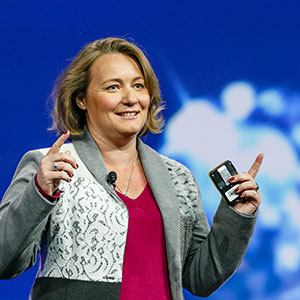
In January, De Beers announced that it was working on an initiative to bring blockchain technology to the diamond industry. But it was scant on details.
But it is not the only company that believes that blockchain could play a role in the industry’s future.
London-based Everledger is one of the first companies that talked about adapting blockchain technology for the jewelry industry. Initially, it saw blockchain mostly as useful for preventing theft.
Lately, it has been working with e-tailer Brilliant Earth and Lucerne, Switzerland–based Gübelin Gem Lab on a scheme similar to what De Beers has proposed; it would use blockchain technology to provide a secure chain of custody for gems and diamonds.
Everledger’s proposal solves what founder and CEO Leanne Kemp sees as a potential flaw of blockchain: While it is known for providing a secure, immutable way of storing data, in the end, the quality of that data is dependent on the person entering it.
The industry’s chain-of-custody issues, she feels, “will not be solved by blockchain alone.”
Kemp says her plans go beyond just entering information into the blockchain, but will marry that technology with scientific methods to identify gems.
Her plan with Brilliant Earth will include an extra method for checking the sourcing for diamonds—though neither she nor that company is willing to say how it works right now.
But she cited as a possible model Gübelin’s emerald paternity test, which tags rough crystals at the mine with an ethanol-based liquid full of DNA-based nanoparticles. After cutting and polishing, enough of these nanoparticles remain for the lab to positively identify the stone’s origin.
Coupled with blockchain, she says, that would provide not only a chain of custody, but also a clear scientific backup of a gem’s provenance.
Daniel Nyfeler, managing director of Gübelin Gem Lab, says the lab would like to adapt its emerald technology to different gemstones, but all of them are unique and pose challenges.
“We have successfully adapted the DNA tracing to Paraiba tourmaline and cultured pearls,” he says. Rubies and sapphires, he says, pose a bigger challenge because they get heated. “The DNA tracing would not survive the hot temperatures,” he says.
Still, he says the lab is researching other ways to trace those gemstones.
Yet, even if the industry develops technology that will allow full transparency, Nyfeler admits it’s not clear the industry is ready for it. It could be a particular threat, he says, to the industry’s vast web of middlemen.
“We assume some players may have to change their business model if we manage to bring this additional level of transparency,” he says.
But in the end, he feels transparency is the future, if only because customers will call for it.
“In the long run, we feel a consumer will not accept a luxury product that cannot give the transparency they want,” he says. “If you are buying food, you can get a lot of information about what you are buying. We are quite convinced that if the industry does not provide the transparency they are looking for, consumers will walk away.”
(Top image: Leanne Kemp, courtesy of Everledger)
- Subscribe to the JCK News Daily
- Subscribe to the JCK Special Report
- Follow JCK on Instagram: @jckmagazine
- Follow JCK on X: @jckmagazine
- Follow JCK on Facebook: @jckmagazine